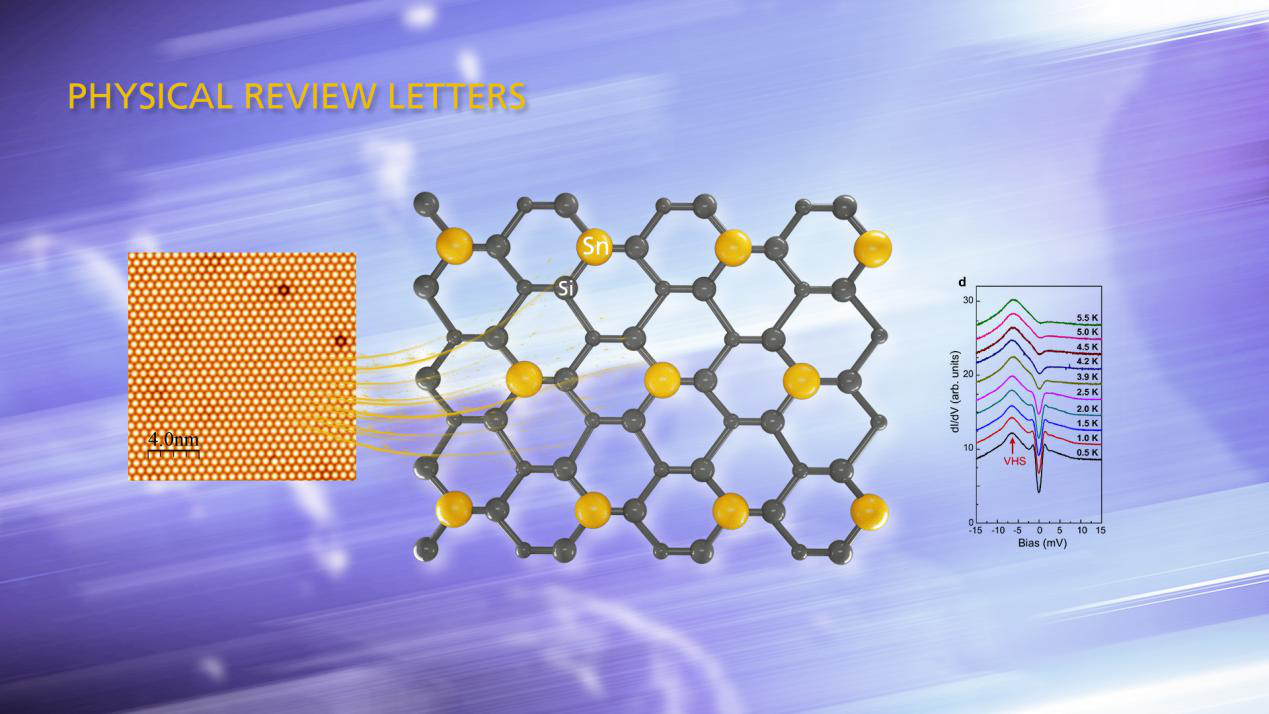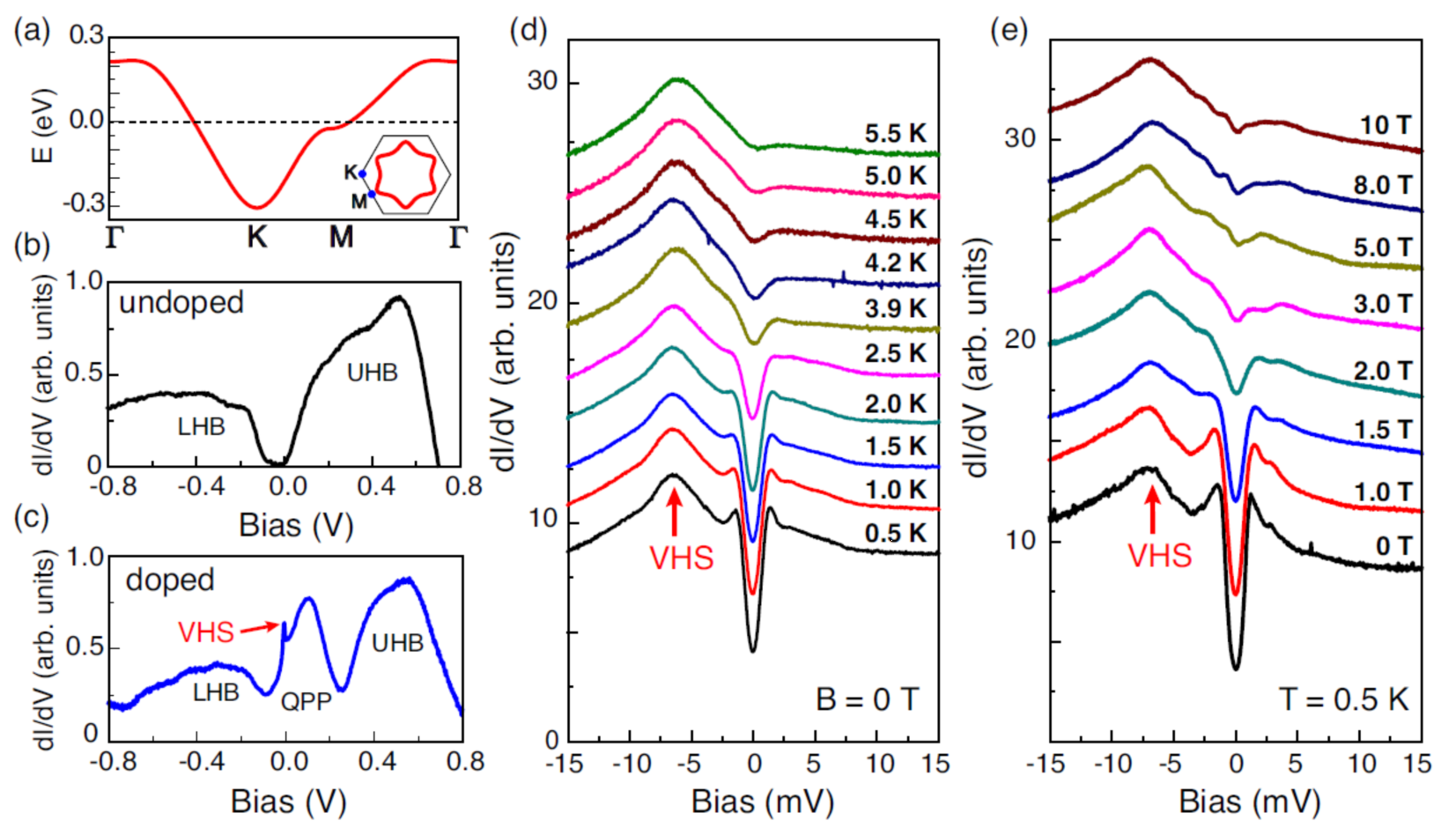Kedong Wang' s group made significant progress in the field of superconductivity
Xuefeng WU, Yingying XIA 2020-10-20
Recently, a group led by Prof. Kedong Wang(Associate Professor, Department of Physics, SUSTech) cooperated with Prof. Fangfei Ming (Sun Yat-sen University) and Prof. Hanno H. Weitering (The University of Tennessee), have made significant progress in the field of superconductivity.

The paper was published in Physical Review Letters, entitled “Superconductivity in a Hole-Doped Mott-Insulating Triangular Adatom Layer on a Silicon Surface.”
The discovery of copper-oxide (cuprate) high-temperature superconductors has drawn extensive attention to the relationship between Mott physics and superconductivity. Due to strong electronic correlation, an undoped cuprate usually exhibits an antiferromagnetic Mott insulating state. Introducing electron or hole doping can drive the cuprate transiting from the Mott insulating state to the superconducting state whose critical temperature is usually much higher than that of conventional superconductors. However, after decades of efforts, there still is no consensus regarding the precise mechanism of cuprate superconductivity. The complex crystal structure, defects, doping, and other factors make the question very difficult. A Mott insulating material with a simple structure that can achieve superconducting transition through doping is an ideal platform to study the mechanism.
 Figure 1: (a), (b) Sn√3×√3 structure diagram on Si(111) surface. (C) STM image of Sn√3×√3.
Figure 1: (a), (b) Sn√3×√3 structure diagram on Si(111) surface. (C) STM image of Sn√3×√3.
In the paper, the authors show that absorption of only 1/3 monolayer of tin (Sn) atoms on a heavily boron-doped Si(111) substrate produces a strictly two-dimensional superconductor. In this Sn√3×√3 phase, each Sn atom forms three saturated backbonds with the silicon atoms below, leaving a half-filled dangling-bond pointing toward the vacuum. It possesses an antiferromagnetic Mott insulator state, which can be modulated by introducing hole doping from the heavily doped p-type Si(111) substrate without affecting its intrinsic structure. Quasi-particle peak (QPP) and Van Hove singularity (VHS) appear near the Fermi surface induced by doping confirms that the system is highly similar to cuprates.
 Figure 2. Electronic structure and tunneling spectra of the Sn√3×√3/Si(111) surface. (a)Momentum dispersion of the dangling-bond surface state. (B) The scanning tunneling spectrum of undoped Sn√3×√3, showing the Mott insulation state. (C) Scanning tunneling spectrum of hole-doped Sn√3×√3. (D) The scanning tunnel spectrum near the Fermi surface shows obvious superconductivity at low temperature, and its superconducting transition temperature is about 4.7K. (E) The suppression of the superconducting state by applying a magnetic field.
Figure 2. Electronic structure and tunneling spectra of the Sn√3×√3/Si(111) surface. (a)Momentum dispersion of the dangling-bond surface state. (B) The scanning tunneling spectrum of undoped Sn√3×√3, showing the Mott insulation state. (C) Scanning tunneling spectrum of hole-doped Sn√3×√3. (D) The scanning tunnel spectrum near the Fermi surface shows obvious superconductivity at low temperature, and its superconducting transition temperature is about 4.7K. (E) The suppression of the superconducting state by applying a magnetic field.
A robust superconductivity state in the system was detected by using scanning tunneling microscopy. Its superconducting critical temperature is Tc=4.7±0.3K, which is higher than the bulk Tc of Sn. Mott correlation in the Sn-derived dangling-bond surface state could suppress the s-wave pairing channel, indicating an unconventional superconductivity in this system.
The discovery of superconductivity in this simple system will greatly enhance people’s understanding of the relationship between Mott physics and superconductivity.
Dr. Xuefeng Wu, senior research fellow in Prof. Kedong Wang’s group, and Prof. Fangfei Ming from Sun Yat-sen University are the co-first authors of the paper. Prof. Kedong Wang, Prof. Fangfei Ming, and Prof. Hanno H. Weitering are the corresponding authors of the paper.
Paper Link: https://journals.aps.org/prl/abstract/10.1103/PhysRevLett.125.117001




